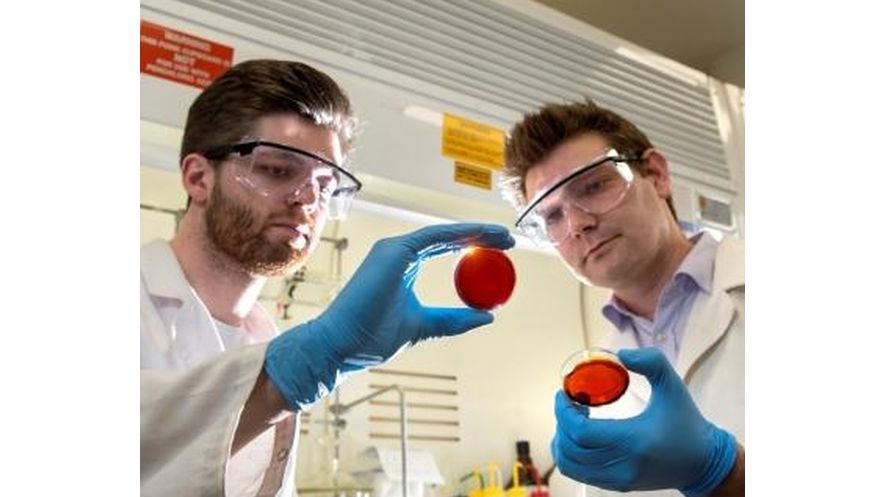A brand new, dirt cheap, non-toxic polymer that literally sucks mercury out of water and soil is set to become a game changer in the battle against one of the world’s most reviled pollutants.
The dark red material, developed by Flinders University’s Dr Justin Chalker (Australia), is made from the industrial waste products sulphur and limonene and turns bright yellow when it absorbs mercury.
Dr Chalker says the new polymer is cheap to produce due to the global abundance of waste sulphur and limonene. That makes it affordable for use in large-scale environmental clean-ups, to coat water pipes carrying domestic and waste water, and even in removing mercury from large bodies of water.
This has significant implications for human health and wellbeing as mercury exposure – whether through the skin or through ingestion, such as eating contaminated fish, is proven to damage the central nervous system and is particularly dangerous to pregnant women and children.
“Mercury contamination plagues many areas of the world, affecting both food and water supplies and creating a serious need for an efficient and cost effective method to trap this mercury,” says Dr Chalker.
“Until now, there has been no such method, but the new sulphur-limonene polysulfide addresses this urgent need.
“More than 70 million tons of sulphur is produced each year by the petroleum industry, so there are literally mountains of it lying, unused, around the globe, while more than 70 thousand tons of limonene is produced each year by the citrus industry (limonene is found mainly in orange peels).
“So not only is this new polymer good for solving the problem of mercury pollution, but it also has the added environmental bonus of putting this waste material to good use while converting them into a form that is much easier to store so that once the material is ‘full’ it can easily be removed and replaced.”
Another bonus that comes with Dr Chalker’s polymer is that it has been found to remove toxic metals from water – and even in small amounts can be used as a mercury detector in areas where pollution is suspected because of the chemical reaction which causes it to turn yellow.
Dr Chalker’s research will be published in an open-access article in the journal Angewandte Chemie International Edition (DOI: 10.1002/anie.201508708), where it was selected as a Hot Paper by the Editors. Angewandte Chemie International Edition is one of the highest profile journals in chemistry research.
For more information, click here.



